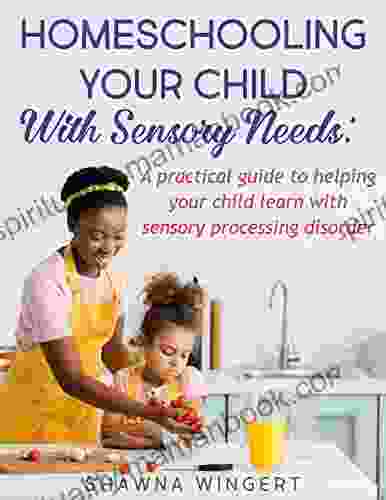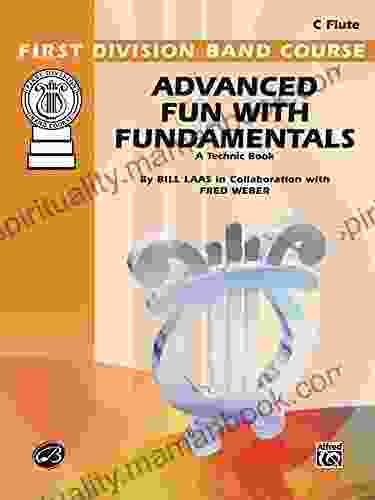Practical Guide to Helping Your Child Learn with Sensory Processing Disorder

Sensory processing disorder (SPD) is a neurological condition that affects how a person receives and responds to sensory information. Individuals with SPD experience difficulty interpreting and organizing sensory input, leading to challenges in everyday activities such as learning, social interaction, and motor skills.
Symptoms of SPD can range from mild to severe and vary greatly between individuals. Some common signs include:
- Difficulty paying attention and staying organized
- Sensitivity to loud noises, bright lights, or certain textures
- Difficulty regulating emotions and behaviors
- Poor coordination and motor skills
- Avoiding social situations or engaging in repetitive, self-stimulating behaviors
SPD can significantly impact a child's ability to learn. Sensory sensitivities and difficulties with attention can interfere with focus and comprehension. Children with SPD may also struggle with reading, writing, and math due to challenges with sensory integration and fine motor skills.
4.5 out of 5
| Language | : | English |
| File size | : | 4249 KB |
| Text-to-Speech | : | Enabled |
| Screen Reader | : | Supported |
| Enhanced typesetting | : | Enabled |
| Word Wise | : | Enabled |
| Print length | : | 20 pages |
| Lending | : | Enabled |
Supporting children with SPD requires a multifaceted approach that addresses their specific sensory needs. Here are some effective strategies:
Sensory Environment:
- Create a sensory-friendly environment by minimizing distractions and providing calming spaces.
- Use soft lighting, avoid loud noises, and offer comfortable seating options.
- Provide fidget toys or stress balls for tactile stimulation and to promote attention.
Sensory Activities:
- Engage children in sensory-rich activities that stimulate their under-responsive senses.
- Encourage activities like playing with Play-Doh, water beads, or shaving cream.
- Use aromatherapy with calming scents like lavender or chamomile.
Sensory Diets:
- Provide a variety of sensory experiences throughout the day to help children regulate their sensory processing.
- Offer calming activities, such as listening to soothing music or taking a warm bath, during times of high arousal.
- Engage in alerting activities, such as jumping on a trampoline or playing with water, to increase arousal levels when needed.
Occupational Therapy:
- Occupational therapists can assess children's sensory needs and develop personalized intervention plans.
- They may use sensory integration therapy, which involves activities that promote the organization and processing of sensory information.
Educational Modifications:
- Work with teachers to provide accommodations that meet the child's sensory needs.
- Allow for extended time on assignments, offer preferential seating, and provide breaks in noisy environments.
- Use visual aids, multisensory learning techniques, and assistive technology to enhance comprehension.
Social Skills:
- Help children develop social skills by providing opportunities for them to practice interacting with others in a supportive environment.
- Role-play social situations and encourage them to share their perspectives.
- Introduce them to social groups or activities designed for children with SPD.
- Be patient and understanding. Remember that children with SPD process sensory information differently and may need more time and support.
- Observe your child's reactions. Pay attention to what triggers their sensory sensitivities and develop strategies to minimize these triggers.
- Collaborate with professionals. Work closely with occupational therapists, teachers, and other specialists to create a comprehensive support system for your child.
- Advocate for your child. Be their voice and ensure they receive the support and accommodations they need.
- Seek support. Join support groups or online communities for parents and families of children with SPD to connect with others and share experiences.
Helping children with sensory processing disorder learn requires a holistic approach that addresses their unique sensory needs. By creating a supportive environment, providing sensory experiences, and collaborating with professionals, parents and educators can empower children with SPD to thrive in and out of the classroom.
4.5 out of 5
| Language | : | English |
| File size | : | 4249 KB |
| Text-to-Speech | : | Enabled |
| Screen Reader | : | Supported |
| Enhanced typesetting | : | Enabled |
| Word Wise | : | Enabled |
| Print length | : | 20 pages |
| Lending | : | Enabled |
Do you want to contribute by writing guest posts on this blog?
Please contact us and send us a resume of previous articles that you have written.
 Top Book
Top Book Novel
Novel Fiction
Fiction Nonfiction
Nonfiction Literature
Literature Paperback
Paperback Hardcover
Hardcover E-book
E-book Audiobook
Audiobook Bestseller
Bestseller Classic
Classic Mystery
Mystery Thriller
Thriller Romance
Romance Fantasy
Fantasy Science Fiction
Science Fiction Biography
Biography Memoir
Memoir Autobiography
Autobiography Poetry
Poetry Drama
Drama Historical Fiction
Historical Fiction Self-help
Self-help Young Adult
Young Adult Childrens Books
Childrens Books Graphic Novel
Graphic Novel Anthology
Anthology Series
Series Encyclopedia
Encyclopedia Reference
Reference Guidebook
Guidebook Textbook
Textbook Workbook
Workbook Journal
Journal Diary
Diary Manuscript
Manuscript Folio
Folio Pulp Fiction
Pulp Fiction Short Stories
Short Stories Fairy Tales
Fairy Tales Fables
Fables Mythology
Mythology Philosophy
Philosophy Religion
Religion Spirituality
Spirituality Essays
Essays Critique
Critique Commentary
Commentary Glossary
Glossary Bibliography
Bibliography Index
Index Table of Contents
Table of Contents Preface
Preface Introduction
Introduction Foreword
Foreword Afterword
Afterword Appendices
Appendices Annotations
Annotations Footnotes
Footnotes Epilogue
Epilogue Prologue
Prologue Michael Medina
Michael Medina Mark Callanan
Mark Callanan Diana Gabaldon
Diana Gabaldon Emanuela Todeva
Emanuela Todeva Caroline Criado Perez
Caroline Criado Perez Randy Shilts
Randy Shilts Lexy Timms
Lexy Timms Leslie Anne Perry
Leslie Anne Perry Bob Bergin
Bob Bergin Emily Bartlett
Emily Bartlett Andrew Wareham
Andrew Wareham Roger Hayden
Roger Hayden Ann Garcia
Ann Garcia Rebecca Roanhorse
Rebecca Roanhorse Ashutosh Jaiswal
Ashutosh Jaiswal Larry Sitsky
Larry Sitsky Fyodor Dostoyevsky
Fyodor Dostoyevsky Susanne Lindgren Wofford
Susanne Lindgren Wofford Beate Ziebell
Beate Ziebell America S Test Kitchen
America S Test Kitchen
Light bulbAdvertise smarter! Our strategic ad space ensures maximum exposure. Reserve your spot today!

 Chinua AchebeInterview with Diana Gabaldon: The Outlander Author on Writing, History, and...
Chinua AchebeInterview with Diana Gabaldon: The Outlander Author on Writing, History, and... Forrest ReedFollow ·17.5k
Forrest ReedFollow ·17.5k Bernard PowellFollow ·14.3k
Bernard PowellFollow ·14.3k Griffin MitchellFollow ·14.5k
Griffin MitchellFollow ·14.5k T.S. EliotFollow ·10.3k
T.S. EliotFollow ·10.3k Holden BellFollow ·15.1k
Holden BellFollow ·15.1k Cristian CoxFollow ·3.8k
Cristian CoxFollow ·3.8k August HayesFollow ·15.1k
August HayesFollow ·15.1k Elliott CarterFollow ·12.4k
Elliott CarterFollow ·12.4k

 Thomas Powell
Thomas PowellHair Care Essentials for Crochet Braids: A Protective...
Crochet braids are a versatile and...

 Philip Bell
Philip BellNative Nations of North America: A Comprehensive Guide
North America is home to a...

 Jackson Hayes
Jackson HayesCall Me Crazy: My Unique Journey with Green
In the kaleidoscopic tapestry of life, where...

 Graham Blair
Graham BlairUnveiling the Literary Treasures of Michigan: A Journey...
The literary landscape of...
4.5 out of 5
| Language | : | English |
| File size | : | 4249 KB |
| Text-to-Speech | : | Enabled |
| Screen Reader | : | Supported |
| Enhanced typesetting | : | Enabled |
| Word Wise | : | Enabled |
| Print length | : | 20 pages |
| Lending | : | Enabled |













